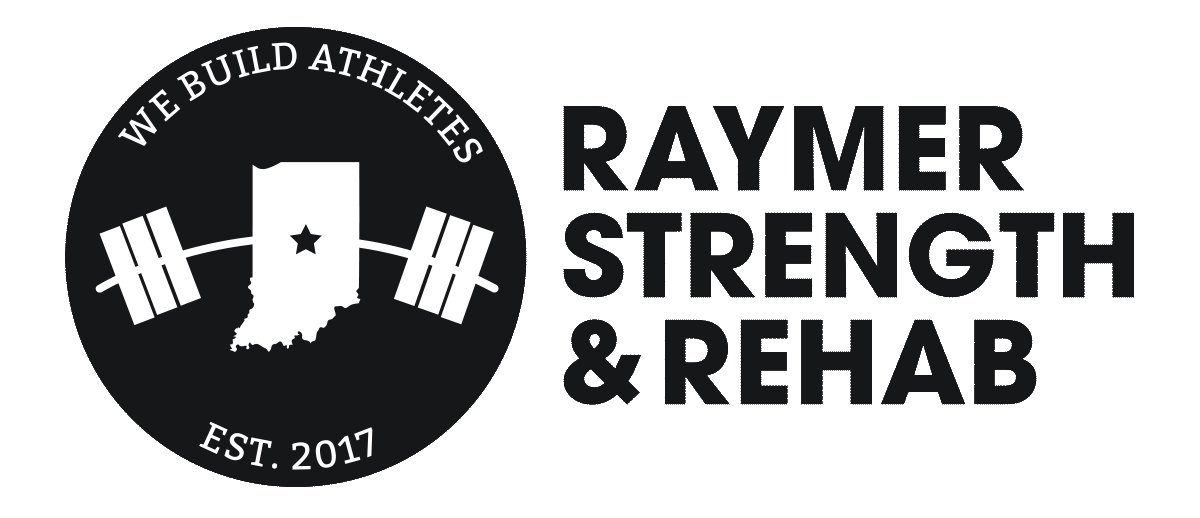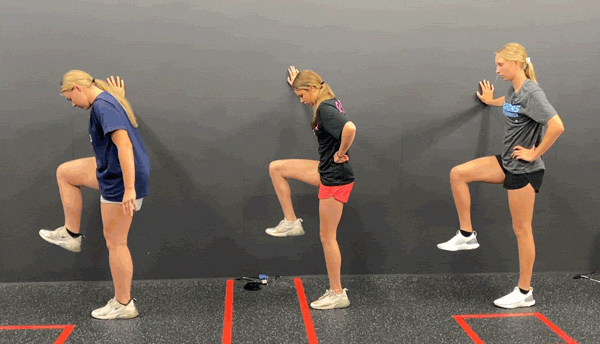New Study: Effects of combined plyometric, running mechanics, and strength training on youth soccer performance
Photos: Julie L. Brown
Did you know that a soccer athlete can perform acceleration and deceleration while turning as many as 1,200 times in a single match (1)?
Having good change of direction and agility abilities can be the sign of a more skilled soccer player (2, 3). And, we know that in order to be effective (and safer) at acceleration and deceleration, the body needs to perform the movements with quality mechanics and the joints need to be ready to produce and absorb those forces.
In today’s youth soccer culture, touches (skill practice and matches) are valued more or considered the same as general physical preparation— like strength, speed, and agility training. However, when it comes to holistic athlete performance, and athlete health, it’s important to prepare the body to produce, absorb, and execute these forces through mechanical training and external resistance.
Brooklyn Gibbons directs the ball in the attacking third.
We must balance learning through skill practice and experience with true physical preparation, especially when we consider the non-contact injury rates of female athletes (4). This is something we’ve been heavily focused on in our training— check out what we’re measuring for athlete knee health.
Studies on late teens and adults (college or professional) in soccer are readily available. And these studies usually focus on either strength OR plyometric OR technical speed training separately. However, this new study, published this September, looks at youth soccer athletes between the ages of 9 and 11, and it combines these training methods in it’s tests.
So, what does a 6 week combined plyometric, running mechanics, and strength training cycle have on common soccer performance measurables like change of direction and counter movement jumps?
Let’s dig into it.
Effects of combined plyometric, strength and running technique training program on change-of-direction and countermovement jump: A two-armed parallel study design on young soccer players
Authors:
Ricardo Martín-Moya, Ana Filipa Silva, Filipe Manuel Clemente, Francisco Tomás González-Fernández
Read the full text: Science Direct | Download the PDF
Summary
Eighty participants age 9-11 were separated into two groups over 6 weeks:
The experimental group that did the combined strength, plyometric, and running mechanics training.
The control group that continued doing their current training regimen.
Before beginning the experiment, all participants became familiar with tests they would be performing - the 505 Change of Direction test, the Illinois Test, and the Counter Movement Jump. This ensured that the overall results wouldn’t be skewed by not practicing the motor skills involved in the post-test.
All participants had two soccer training sessions and one game per week. The experimental group added 30 minutes of the new combined training into their existing routines twice a week. This additional training included a warm up, the main training part, and a cool down.
The combined training was periodized and broken down into Basic, Medium, or High difficulty as the 6 weeks progressed.
Strength movements included, but were not limited to, lunges, push-ups, jump squats, planks, bulgarian split squats, resisted sprints, etc. Plyometric exercises included, but were not limited to, bilateral box jumps, forward-backward multi-jumps, lateral jumps, header jumps, etc. Running technique training included, but were not limited to, maximal sprints, change of direction drills, running drills, etc.
Key Insights
The experimental group significantly improved on all of their tests— the 505 Change of Direction Test (+5.25%), the Illinois Test (+1.94%), and the Counter Movement Jump (+7.78%), whereas the control group only marginally improved.
Limitations
Because the authors only measured Change of Direction using overall times in Change of Direction Tests, it’s difficult to say if the improvements were actually in the athlete’s abilities to brake and turn or if it was through increased linear speed. It was likely both. Also, because this experiment combined training modalities, it’s impossible to tell which training effected exactly what outcome.
Sammie King changes direction with the ball during a match
Photos: Julie L. Brown
Our Thoughts
This study was far more practical than others in that it combined different facets of sports performance and injury reduction training together — instead of isolating them to measure the outcomes.
Similar results were found in a similar study that looked at high-level female soccer athletes (5), but the results weren’t as dramatic likely due to skill and age.
The way these training sessions were put together, periodized, and executed are exactly what’s appropriate to do at those young ages. We didn’t see anything about external resistance, but that was likely due to two factors:
Available equipment
Group standardization
I want to be totally clear— it is safe to add external resistance to young athletes, but only if they have solid movement patterns. This study needed to make sure all athletes were doing the same things, so making it body-weight oriented allowed them to standardize their experiment and it’s results.
Athletes practice a drill intended to improve their sprint mechanics.
I liked that the authors included running techniques and mechanics into the training. At those young ages, especially, just learning more optimal ways to run can pay MASSIVE dividends. It also sets them up for more progress as they age— these athletes can move more effectively and efficiently than their peers by combining good mechanics with more force production capacity.
The study’s results are not surprising, at all, but it’s always great to see what we do backed up with data. Physical preparation means helping athletes learn how to move effectively and produce and absorb force in the process.
Conclusion
Balancing skill practice and game experience with physical preparation is not only essential to better athlete performance (as this study proved) but also long term health. Preparing the body to produce and absorb force, with good mechanics that’s AGE APPROPRIATE is central to a good physical preparation program. And that’s why working with qualified strength and conditioning coaches is essential.
If you’re a parent or a youth athlete looking for performance training, finding a coach that knows what “Long Term Athletic Development” means is key. That’s the key phrase used in the Strength and Conditioning industry.
And hey, if you’re in Central Indiana, we’d love to get to know you and your training goals.
Lily Wilson performs Nordic Hamstring Curls.
References:
Ricardo Martín-Moya, Ana Filipa Silva, Filipe Manuel Clemente & Francisco Tomás González-Fernández (2023) Effects of combined plyometric, strength and running technique training program on change-of-direction and countermovement jump: A two-armed parallel study design on young soccer players, Gait & Posture, 105, 27-34, DOI: https://doi.org/10.1016/j.gaitpost.2023.06.025.
Matteo Zago, Andrea Gianluca Piovan, Isabella Annoni, Daniela Ciprandi, F. Marcello Iaia & Chiarella Sforza (2016) Dribbling determinants in sub-elite youth soccer players, Journal of Sports Sciences, 34:5, 411-419, DOI: 10.1080/02640414.2015.1057210
Makhlouf, I., Tayech, A., Arbi Mejri, M., Haddad, M., G Behm, D., & Granacher, U. et al. (2022). Reliability and validity of a modified Illinois change-of-direction test with ball dribbling speed in young soccer players. Biology of Sport, 39(2), 295-306. https://doi.org/10.5114/biolsport.2022.104917
Cullen, M. (n.d.). Why female soccer players are at higher risk of ACL injuries: Wentworth-Douglass Hospital. Why Female Soccer Players Are at Higher Risk of ACL Injuries | Wentworth-Douglass Hospital. Retrieved January 27, 2023, from https://www.wdhospital.org/wdh/services-and-specialties/orthopedic-care/blog/why-female-soccer-players-are-at-risk-of-acl-injuries
Roso-Moliner, A., Mainer-Pardos, E., Cartón-Llorente, A., Nobari, H., Pettersen, S. A., & Lozano, D. (2023). Effects of a neuromuscular training program on physical performance and asymmetries in female soccer. Frontiers in physiology, 14, 1171636. https://doi.org/10.3389/fphys.2023.1171636






